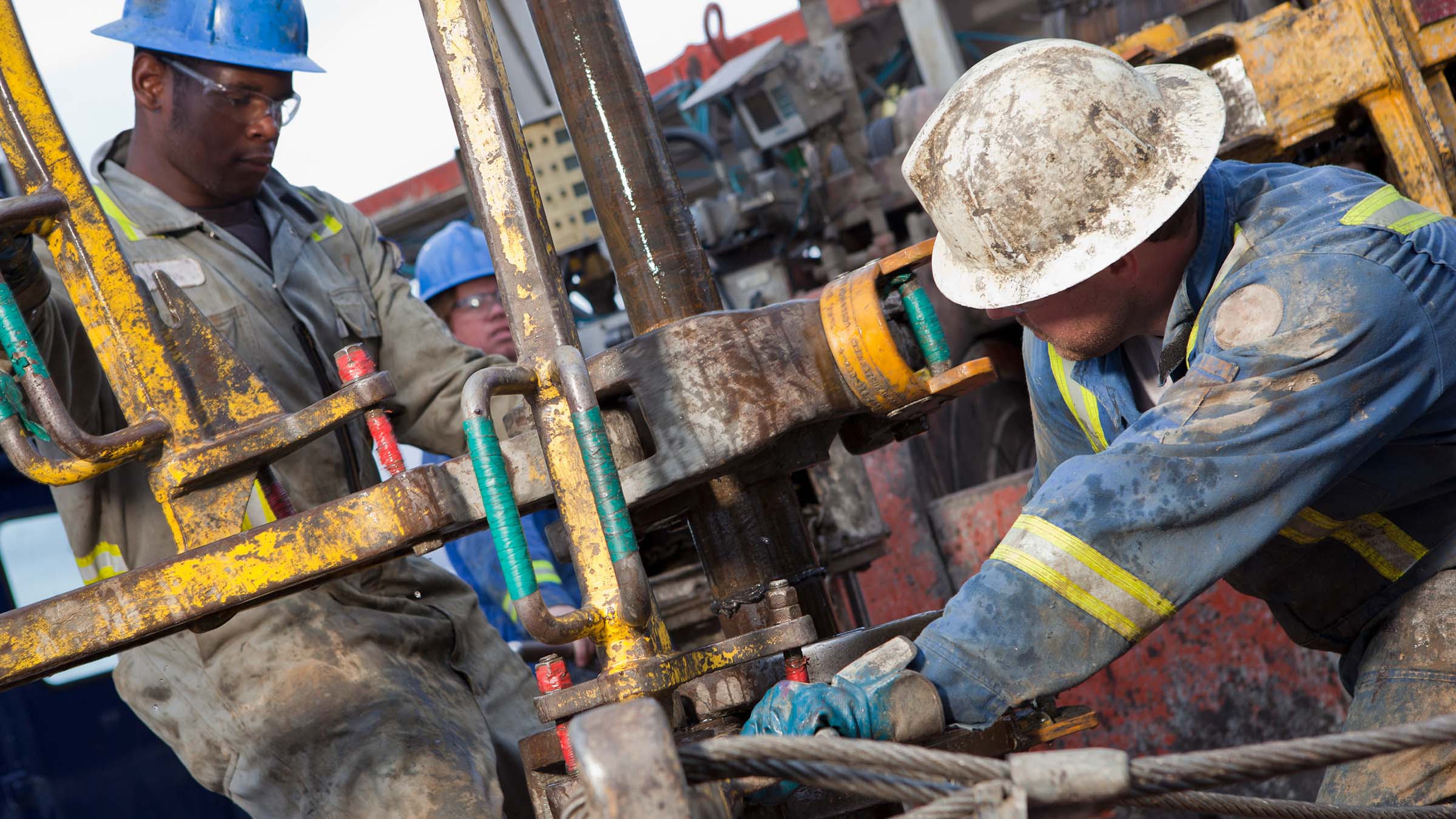In 2020, the pandemic shocked the oil market and sent prices and production crashing across the United States, including in western North Dakota’s Bakken oil patch.
Over the past 15 months, however, prices have recovered from a pandemic low of $8 per barrel to a current level around $60 per barrel (Chart 1).
Given the price increase, one might expect a similar return of oil production in the United States, but that hasn’t been the case, with production remaining below pre-pandemic levels as of July. This trend is even more pronounced in the Bakken region, which lags other top shale or tight oil-producing regions around the country, according to estimates from the Energy Information Administration (Chart 2). In these geologic formations, like the Permian Basin in Texas, oil and gas locked in rock must be recovered through more recently developed hydraulic fracturing (or “fracking”) methods.
“It’s a sleeping giant,” said Lynn Helms, director of the North Dakota Department of Mineral Resources, in an August webinar. “The COVID pandemic put the industry to sleep, and it’s struggling to wake up.”
Prior to 2020, Bakken production was growing more slowly compared with other parts of the country, and it fell much more steeply when the pandemic first began. Although Bakken production began to rebound in the summer of 2020, it has fallen slightly since last fall, and growth has mostly stagnated in 2021. Meanwhile, total production from top U.S. shale oil regions has seen continued, if modest, growth.
“We were really expecting an increase in production in July, based on what we were seeing in terms of June activity … and the industry delivered the opposite,” said Helms in his September Director’s Cut presentation.
More wells, please
Oil production is flat in part because drilling remains subdued despite price increases. In the months prior to the pandemic, the Bakken had an average of 53 active rigs drilling for oil. The region bottomed out at nine in 2020, and only 18 rigs have resumed operation as of July 2021, according to Baker Hughes. Active rigs have also increased faster nationwide, while the opposite was true before the pandemic (Chart 3).
“At current prices, we should be seeing 60 drilling rigs operating,” noted Helms in his August webinar.
The good news is that the Bakken is seeing a higher rate of completed wells, which in turn is reducing the backlog of drilled but uncompleted (DUC) wells in the region.
A higher rate of well completions shows that oil companies are responding to price signals and bringing more production back online. However, the current rate of completions is still slower than expected in the region (Chart 4).
“The number of well completions in the month of July were, again, lower than what we would consider adequate to maintain or grow production,” said Justin Kringstad, director of the North Dakota Pipeline Authority, during the September Director’s Cut presentation.
Spillover effects from oil
The slowdown in the oil industry has also had a major impact on the Bakken labor market. Before the pandemic, Bakken counties had slightly lower rates of unemployment than the rest of North Dakota. During the initial shock of the pandemic, unemployment reached almost 12 percent in Bakken counties, while elsewhere in the state it averaged about 9 percent.
Unemployment in the Bakken has since gradually decreased, but at nearly 5 percent, it remains well above the 2.97 percent unemployment rate in the rest of the state.
Not surprisingly, employment in Bakken counties has also lagged the rest of the state. Although the region has experienced modest job growth so far this year, it has not returned to pre-pandemic levels. Meanwhile, other parts of North Dakota returned to pre-pandemic levels several months after the pandemic first began (Chart 5).
For the past nine years, North Dakota has been the second-largest oil-producing state in the nation behind Texas. In July, New Mexico pulled ahead of North Dakota into the second leading spot.
Still, officials remain optimistic that the Bakken will see better days in 2022. “When I look at July 2021 production, I kind of had to say, ‘Uff da, that’s North Dakota,’” said Helms in the September webinar. Later, Helms added that they “continue to anticipate, with improved capital investment, that by the second half of next year, we’ll see much healthier numbers.”
Haley Chinander is an analyst and writer at the Federal Reserve Bank of Minneapolis. In her role, Haley tracks and reports on the Ninth District economy with a focus on labor markets and business conditions. Follow her on Twitter @haleychinander.






